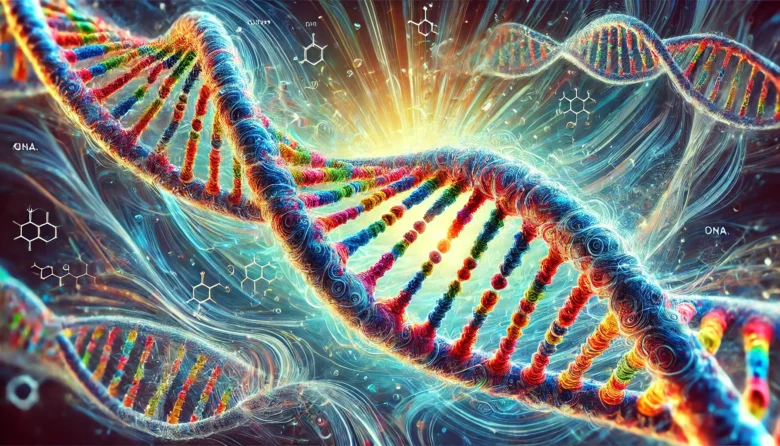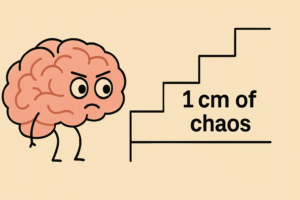Have you ever wondered what makes up the very foundation of life? At the heart of every living organism, from the simplest bacteria to complex humans, lies a fascinating molecular system. This system is driven by two remarkable molecules: DNA (Deoxyribonucleic Acid) and RNA (Ribonucleic Acid). These molecules serve as the foundation of life, playing a crucial role in the storage, transmission, and expression of genetic data. In this blog, we’ll explore the chemistry behind DNA and RNA, how they differ, and why they are so crucial to all living beings.
The Basic Structure of DNA and RNA
DNA and RNA are both types of nucleic acids, large biomolecules that are essential for all known forms of life. These molecules are made up of smaller units called nucleotides. Each nucleotide in DNA and RNA consists of three components: a sugar molecule, a phosphate group, and a nitrogenous base.
Sugar Component:
-
- DNA contains a sugar called deoxyribose, which lacks one oxygen atom, making it slightly different from RNA’s sugar.
- RNA contains ribose, which has one more oxygen atom than deoxyribose.
Nitrogenous Bases:
-
- DNA contains four bases: Adenine (A), Guanine (G), Cytosine (C), and Thymine (T).
- RNA has the same bases as DNA, except Thymine (T) is replaced with Uracil (U).
Double Helix vs. Single Strand:
-
- DNA is famous for its double-helix structure, where two strands of nucleotides wind around each other, like a twisted ladder.
- RNA, on the other hand, is typically single-stranded but can sometimes fold into complex structures.

How DNA and RNA Differ
Both DNA and RNA play essential roles in genetics, but their functions and structures are distinct. DNA serves as the long-term storage of genetic information, while RNA plays several roles, including acting as a messenger that carries information from DNA to make proteins.
DNA: The Blueprint of Life
DNA is the master blueprint for all living organisms. Found mainly in the cell’s nucleus, it holds the instructions needed for the development, functioning, and reproduction of organisms. Each person’s DNA is unique, carrying genetic information passed down from parents to offspring. This is why children inherit traits from their parents, such as eye colour or height.
RNA: The Versatile Worker
While DNA is the master blueprint, RNA is like the worker that helps execute the plan. RNA converts the genetic instructions in DNA into proteins, which are vital for the body’s structure and functioning. There are three main types of RNA:
mRNA (Messenger RNA): Carries instructions from DNA to the cell’s protein-making machinery.
tRNA (Transfer RNA): Helps decode the mRNA sequence into amino acids, which build proteins.
rRNA (Ribosomal RNA): Forms a part of the ribosome, the cellular structure where proteins are made.
DNA Replication: A Masterful Process
One of DNA’s most incredible features is its ability to replicate itself. When cells divide, DNA must be copied so that each new cell has the same genetic information. This replication process is semi-conservative, meaning each new DNA molecule consists of one original strand and one newly synthesized strand. The enzymes responsible for this process, such as DNA polymerase, help ensure the accurate copying of genetic material. Mistakes are rare, but when they occur, they can lead to mutations that might cause diseases or drive evolution.
The Central Dogma of Molecular Biology
The flow of genetic information follows a principle known as the Central Dogma of Molecular Biology. This describes how information flows from DNA to RNA and then to proteins. The process involves two key steps:
Transcription: DNA is transcribed into mRNA inside the cell’s nucleus.
Translation: mRNA travels to the ribosome, where it is translated into a protein. The sequence of bases in mRNA determines the sequence of amino acids in the protein.
Real-World Applications: From Forensics to Medicine
DNA and RNA aren’t just academic topics; they have practical, life-changing applications. For instance, DNA profiling has revolutionized forensic science, allowing investigators to identify individuals based on their unique genetic codes. Similarly, understanding DNA and RNA is crucial in medicine, where genetic testing can help identify hereditary diseases and gene therapy offers potential cures for genetic disorders.
Case Study: The Role of RNA in mRNA Vaccines
A recent groundbreaking example of RNA’s importance is the development of mRNA vaccines, such as the COVID-19 vaccines from Pfizer and Moderna. These vaccines work by using a small segment of the virus’s mRNA to instruct cells to produce a protein that triggers an immune response, protecting the body against the virus.
The Chemistry Behind Mutations and Evolution
Mutations are changes in the DNA sequence. While some mutations can be harmful, leading to diseases like cancer, others play a vital role in evolution. These changes in DNA over generations can lead to new traits, helping species adapt to their environments. Without mutations, life as we know it would not have evolved.
Why Should You Care About DNA and RNA?
Understanding DNA and RNA isn’t just for scientists in labs. It helps us appreciate the incredible complexity of life and the role that genetics plays in shaping who we are. From understanding our own health to making breakthroughs in medicine, genetics is at the core of many aspects of life that affect all of us.
Conclusion
DNA and RNA are much more than just scientific jargon; they are the blueprint and machinery that drive life itself. From the replication of cells to the production of proteins, these molecules are fundamental to everything living on Earth. As research continues, we are constantly discovering new ways DNA and RNA can be harnessed to improve health, solve crimes, and understand the very nature of life.
If you’re ever feeling curious about the mystery of life, remember that within every cell of your body lies a fascinating story written in the language of DNA and RNA. Dive deeper into the wonders of these molecules, and you’ll unlock a new appreciation for the complexity and beauty of life.
Author’s Note
As someone passionate about making science accessible, I hope this blog helps unravel the mystery behind DNA and RNA for you. Whether you’re a student, a curious reader, or someone interested in science, the chemistry of life is a topic that touches us all in fascinating ways.
G.C., Ecosociosphere contributor.
References and Further Reading
- Sugar in the DNA vs. Sugar in the RNA- What’s The Difference (With Table). https://www.diffzy.com/article/difference-between-sugar-in-the-dna-and-851
- RNA Full Form – 7 Authentic Facts You Must Know!. https://candidschools.com/rna-full-form/
- Inquiry into life [Fifteenth edition] 9781259426162, 1259426165 – DOKUMEN.PUB. https://dokumen.pub/inquiry-into-life-fifteenth-edition-9781259426162-1259426165.html




